Phoebus
Standardbred
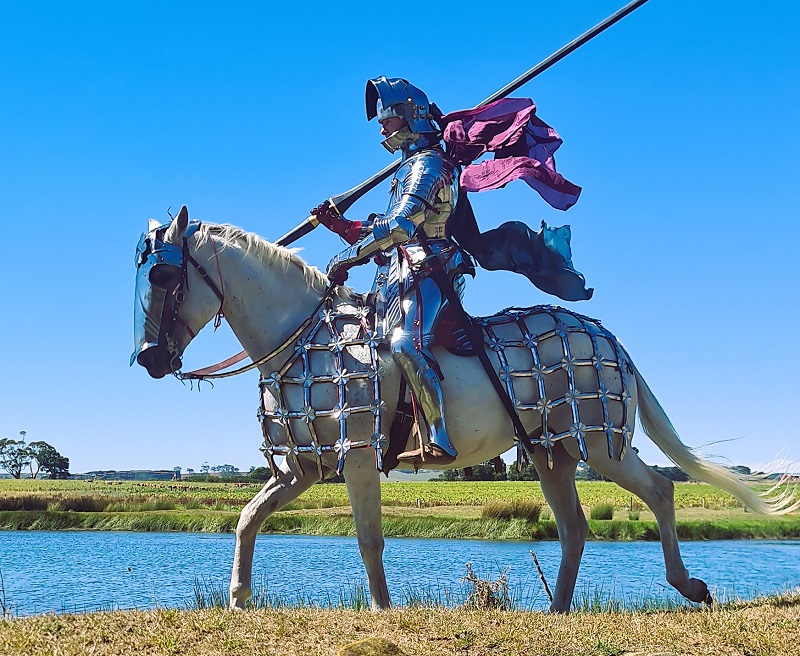
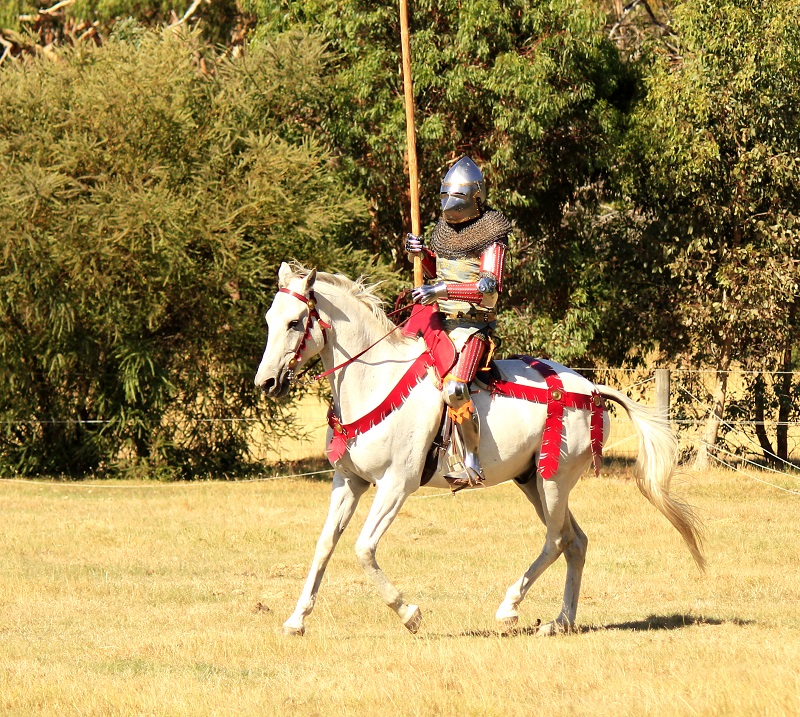



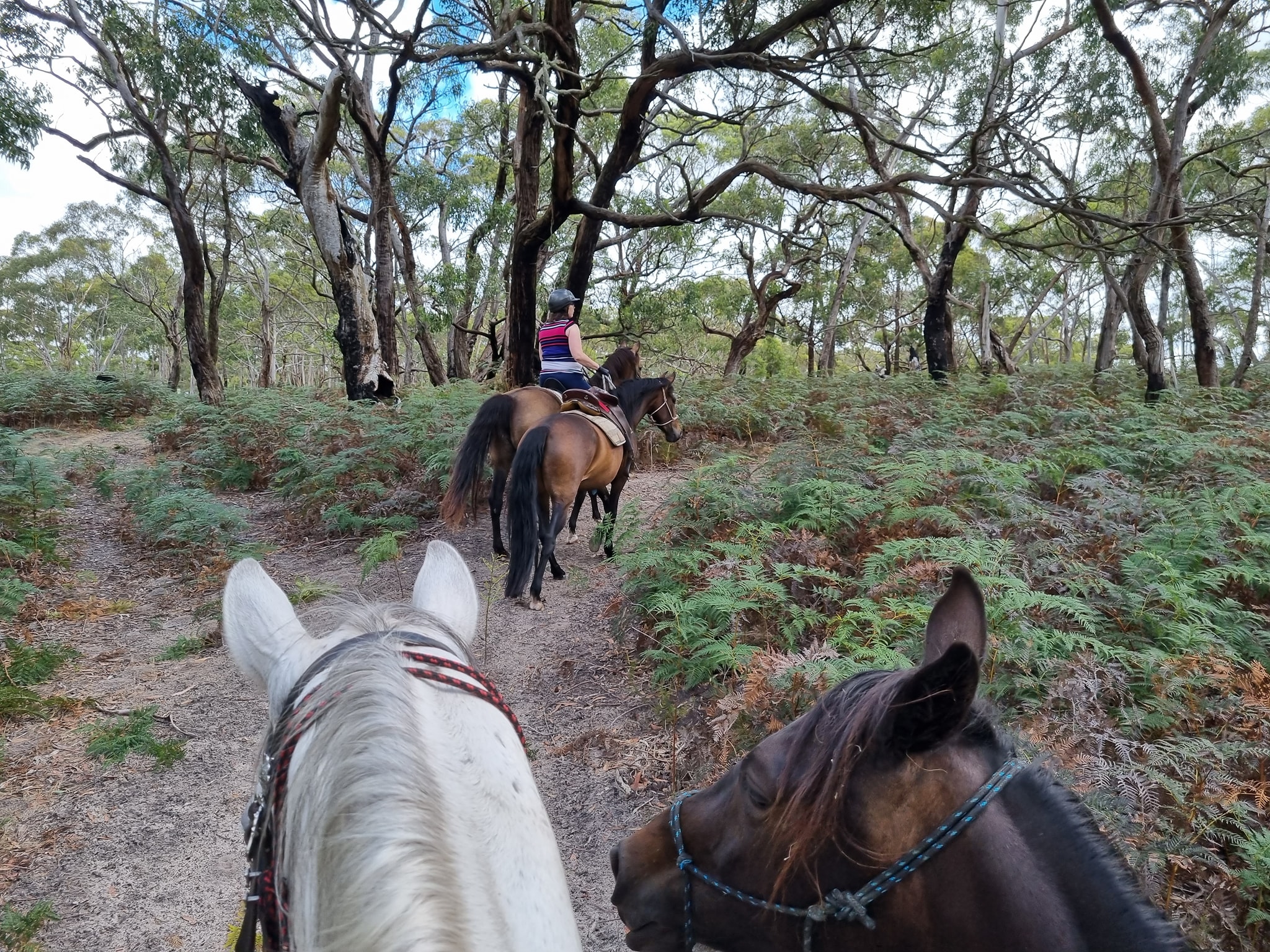
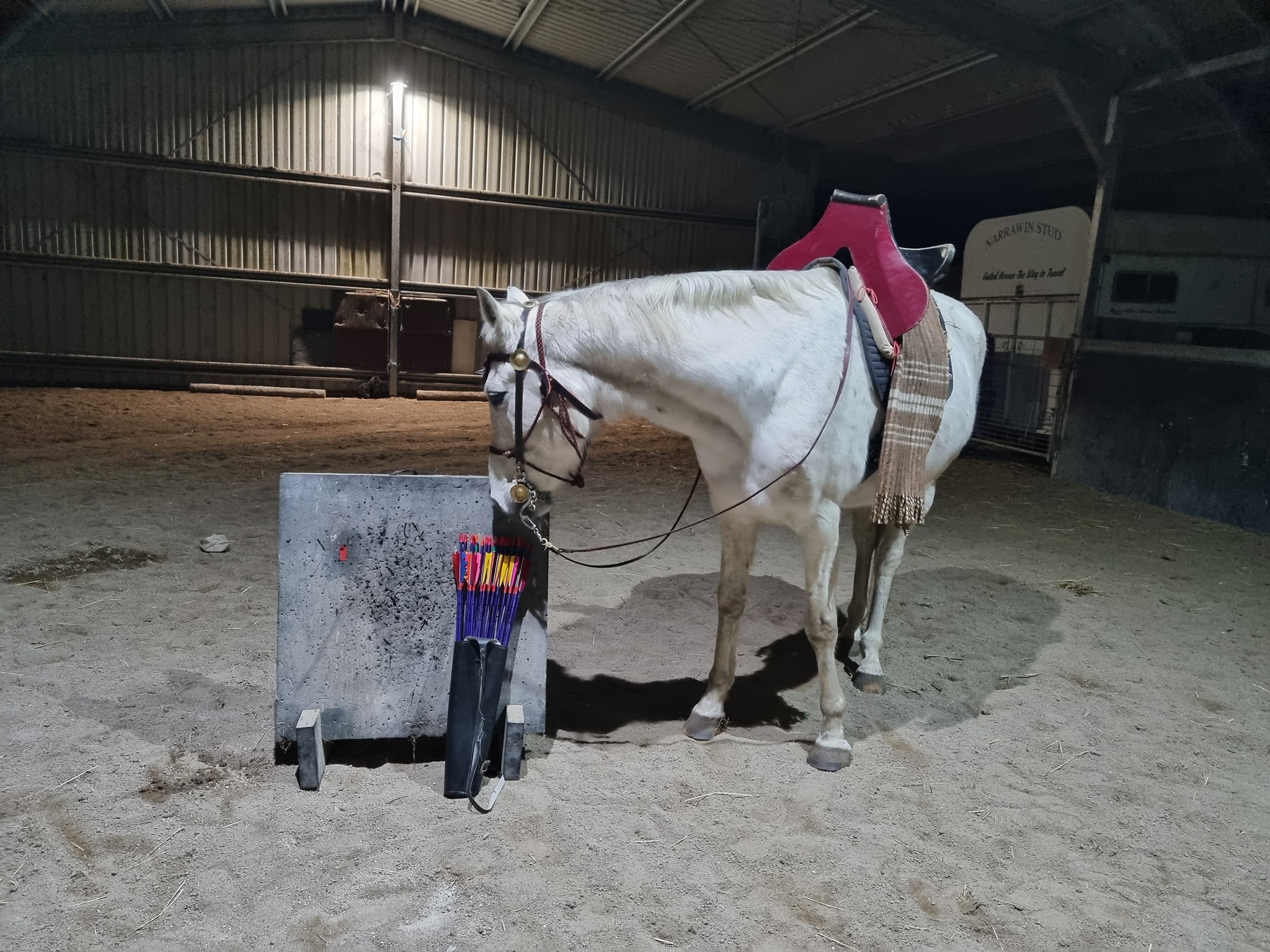
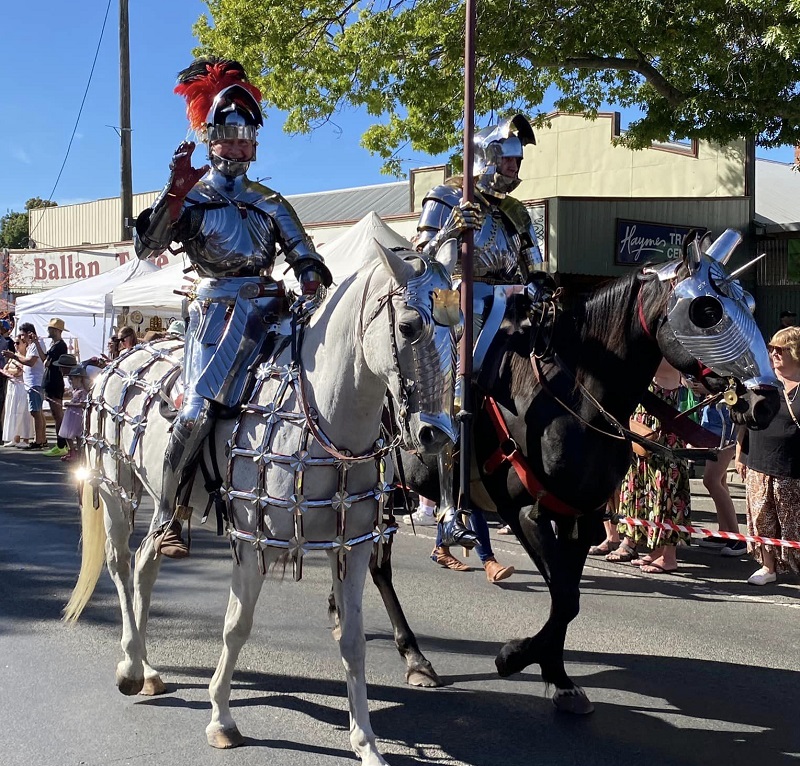
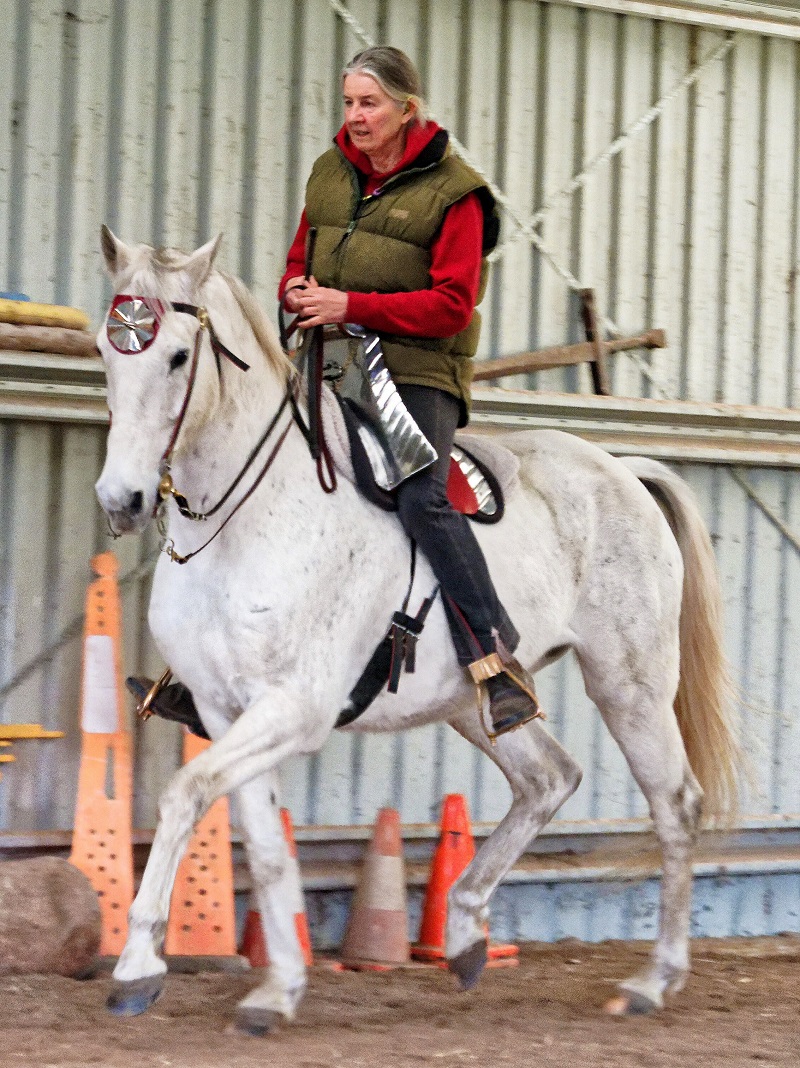

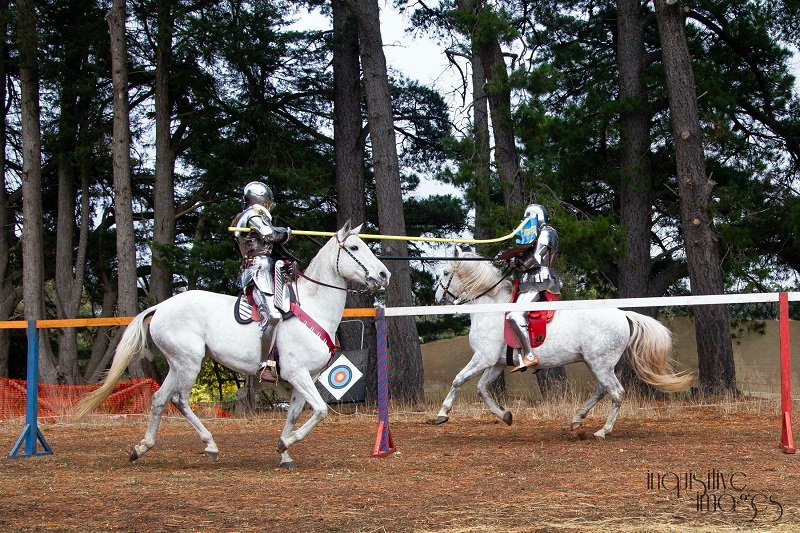



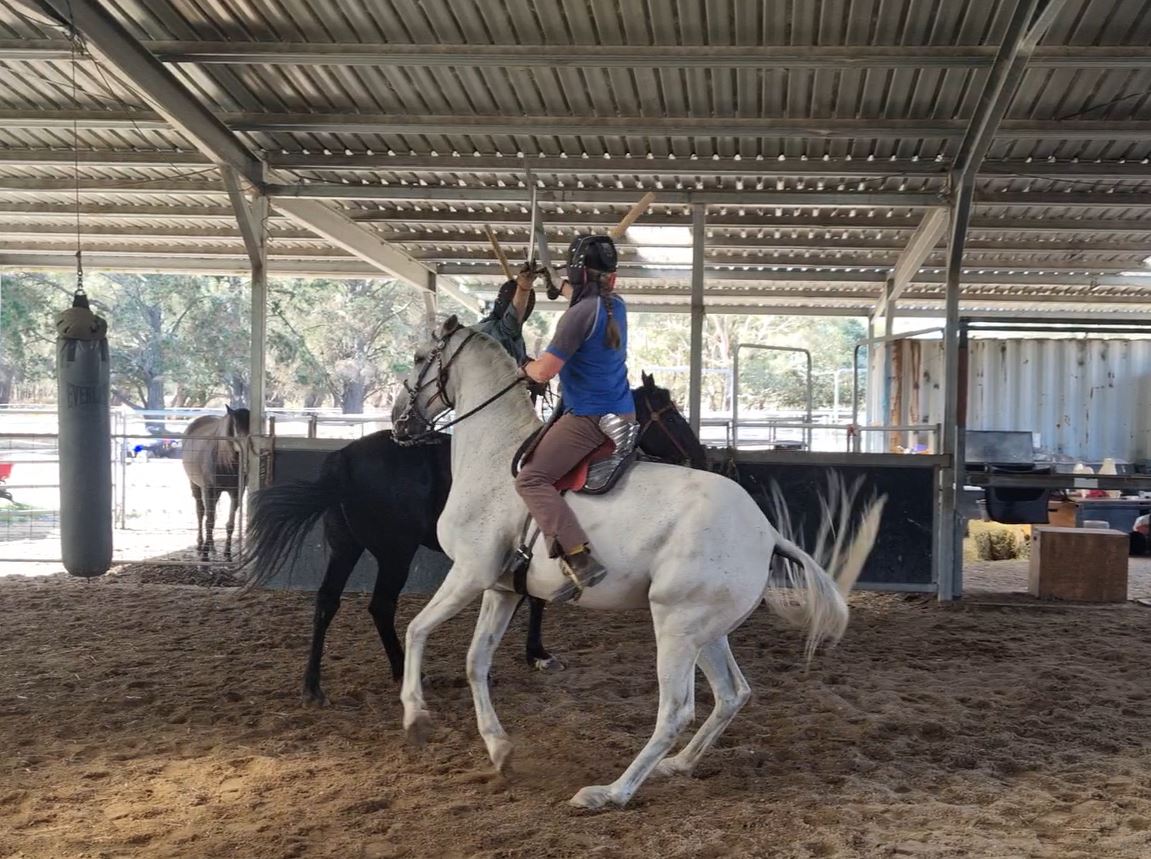
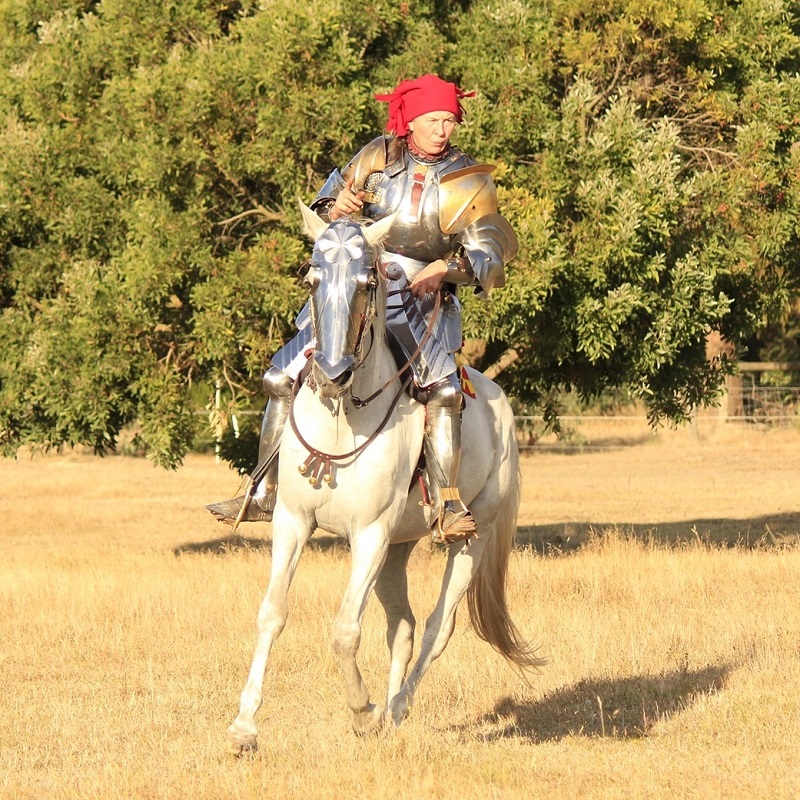
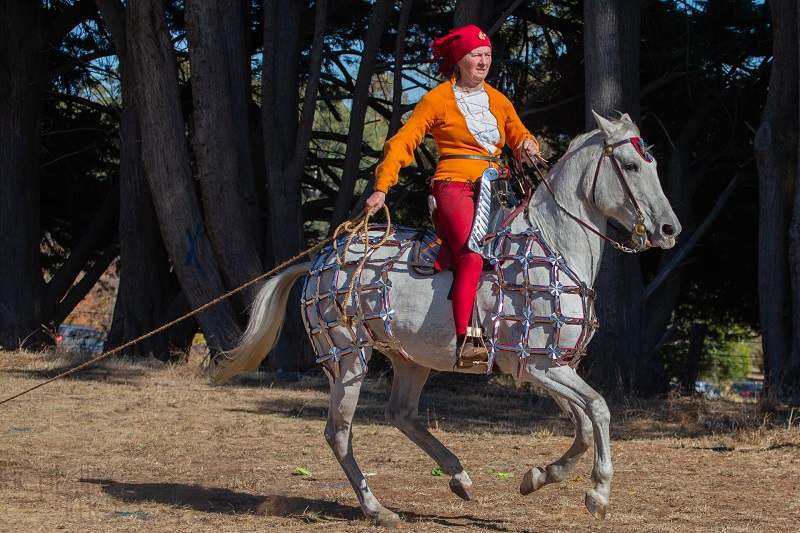
Phoebus
- Sex: gelding
- DOB: 24.10.2013
- Sire: Jet Laag
- Dam: Go Glory
History
Phoebus’ harness racing career (registered name Foo) consisted of winning the princely sum of $970 over 7 races before being retired and coming to Narrawin Stud in February 2020. The main reason I brought him home was to do mounted combat and jousting and because I wanted a gaited Standardbred. He certainly met and exceeded those expectations.
Since I started him under saddle, he has clocked up a few miles on the trails. This gave me opportunity to work on his gaits and he has developed a pretty ground covering smooth amble. This is absolutely my preferred gait when we are out on rides, although he has a fantastic canter as well.
I have taken a lot of time with his education, and right from the start we had arena sessions where we worked on riding off the seat, with the goal of one handed riding. He has come a long way since we started, and he is the first horse that has helped me experience and work on some more advanced level stuff. I have had help from Anke Hawke and occasionally other teachers, and from the online seminars of the Bueckeburder Riding School in Germany.
After initially focusing on establishing an amble, we didn’t trot at all, but we did work in canter as well. Phoebus has some physical limitations that make it difficult for him to canter on one lead, and therefore it has been a long road and many failed attempts to achieve canter on both leads. Nonetheless, we progressed to walk-canter and stop-canter transitions, shoulder-in and travers in walk, then halfpass in walk as well as forehand and hindquarter turns. One handed, in a curb. Then we got the beginnings of a Spanish walk, which taught him to lift his shoulders more. I experimented with piaffe, but he didn’t get the idea of bending his hocks and stifles and/or it was hard for him, so he offered a side to side step which I didn’t want to encourage. So we put that on the back burner.
We started on speeding up the hindquarter turns and it didn’t take long before he got the idea that he could do those with little hops, and while I hesitate to call them rollbacks, they certainly became fast, and he was enjoying those so much, he practised them out in the paddock when playing with others. Next step, we brought the trot back. That required a special signal initially, and he kept falling out of it into an amble, but eventually, he got it and we can clearly separate both now, regardless of how I change my balance or leg aids. Trot is so useful for schooling work (but the amble is what we use on the trail, because he has a big trot…). Over time, the trot got better, more carried, and the feel of the Spanish walk combined with the slower trot started to lead to passage, which is something we still play with and will get better at.
Having established a reliable trot meant that we could start on shoulder-in, travers, halfpass (as well as counter-shoulder-in and renvers) in trot as well. That took a little time, as he will offer amble or a slow canter when he struggles with his balance (or when he feels like it). This trot work also solidified the trot and made it more cadenced and elevated.
I forgot to mention that he seems to enjoy the Spanish walk so much that he will spontaneously offer it. Sometimes when I wave my arms about and other times when I ask him something and he doesn’t understand what I want, he says: you want THIS? and gives me some huge steps. These days, he sometimes offers other tricks from his expanding repertoire, but the Spanish walk still has a special place.
And yes, we are still working on that canter lead… But! The story got more complicated and more interesting, because from the “rollbacks” he got the idea of tucking his butt and making little hops, which I started directing forward. From the Spanish walk and passage-y steps he understood my hip signal of lifting the front, so we put all that together and we started experimenting with terre a terre. That was a little messy at the start, because we could never be 100% sure of direction or number of hops and he would sometimes use his head for up momentum. What wasn’t lacking was enthusiasm, as long as I didn’t ask too often, either in a session or in general. So we played with it here and there, and we can now get several slower hops in a straight line or on a circle, and when I look at pictures or video of it, I can see his hindend nicely coiled. On his good side, he manages some pretty decent canter pirouettes as well as the beginnings of travers. On his bad side, he’ll also do canter pirouettes, but mostly on the wrong lead. That’s not optimal, and we continue to work on that, but I have found that via the two-time bounces we’ve been playing with, I can sometimes get him into a canter on his ‘bad’ side. I really think that is promising. It certainly isn’t the path I had envisaged when I started, but he seems happy, I’m happy, and we’ve discovered all sorts of cool stuff in the process. We are also back to playing with piaffe again, and while his Standardbred conformation isn’t helping, we are making some progress. I guess he has developed more muscling in the right places since our first attempts and we have a better chance of working out good movement now. It is interesting to see that occasionally he offers this ‘trick’ as well.
Of course we don’t just do dressage and trail rides. We started to do weapons work and he was introduced to armour fairly early in the piece. He had his first public event at the SA Medieval Fair in 2022, doing a supberb job with a skill at arms and joust display. Since then, he has done additional Fairs and parades. We mostly do 15th Century re-enactment (mostly in armour), but we also do 14th Century (also in armour) and Light Horse (with the Ballan Light Horse Troop). We do a lot of group training sessions at home, and Phoebus gets to do archery, formation riding, skill at arms, melee, jousting and other fun things. We often swap horses and he is a good sport by allowing other riders to work with him.
Aside from that, I use him to help educate other horses (ponying) and riders. While I can safely say that green riders and horses aren’t his passion, he humours me and does a really good job. This makes him extremely useful to have around. He can be trusted with complete novice riders and he takes his cues from me when they fail to ask him the right questions.
He is certainly a very special unit. He was a very quiet mouse when he first arrived, now he has opinions and his status in the gelding paddock has elevated. He is a bit of a chicken and needs a bit of convincing that this or that won’t actually eat him, but he is prepared to listen. On the other hand, he can be a cheeky sod, I can see that when he plays with others, and when he makes suggestions about where to scratch him or when he pulls faces. He has his little routines as well. Most impressive though is how we can play with something, there is a new movement pattern way or doing something, and we do it once (if very imperfectly) and then we stop and I tell him that was great. Then we quit. And next time, he’s thought about it and he’s got it, or he’s happy to play with it a bit more to explore it until we’ve got it.
Gaits & Movement
Phoebus is four-gaited, having a walk, trot, canter and amble.
Personality
He is a pleasant, sensible, easy to work with horse, whether under saddle or on the ground. While I call him a chicken, he actually copes very well with some of the things I ask of him. He is second in command in the gelding paddock and the self-appointed police man who hangs out with the boss and keeps the underlings in line. He is also highly active in every play session.